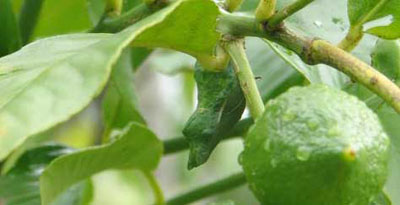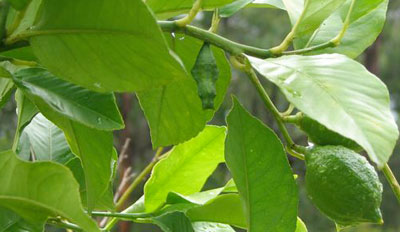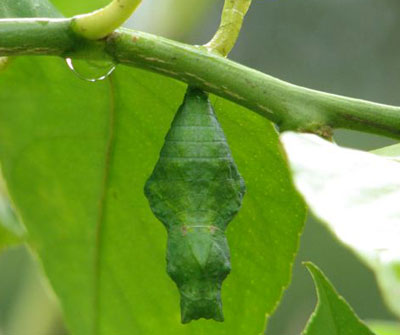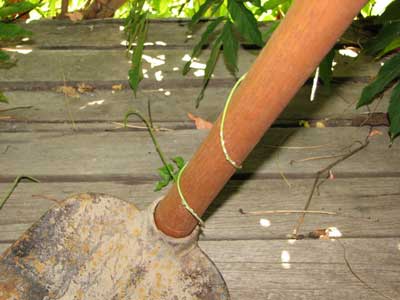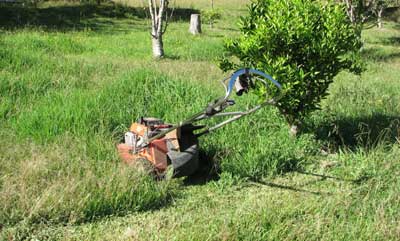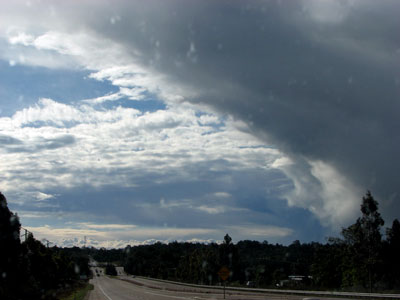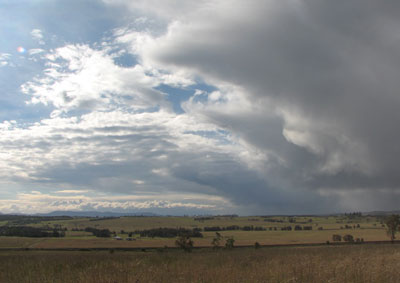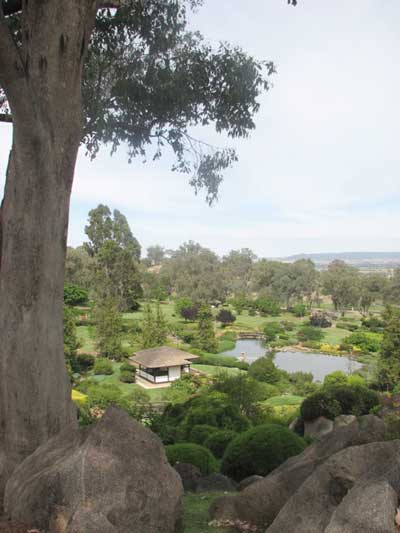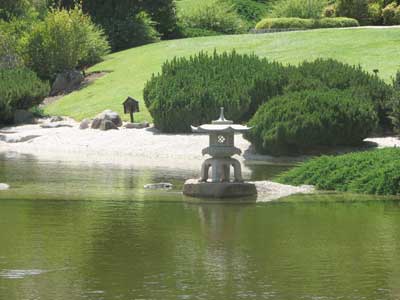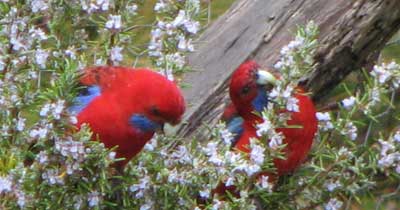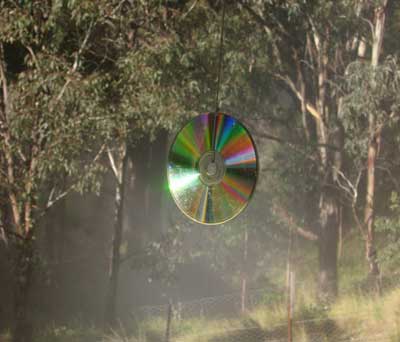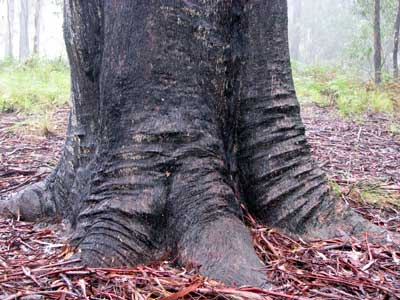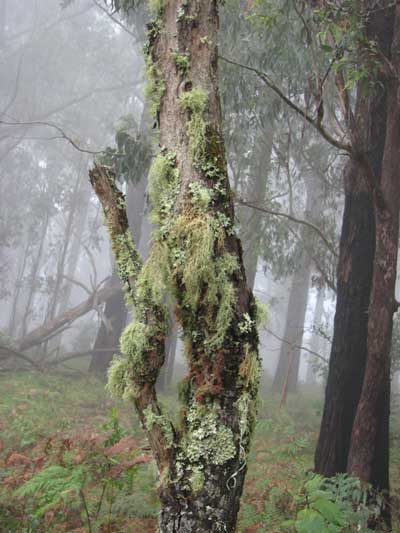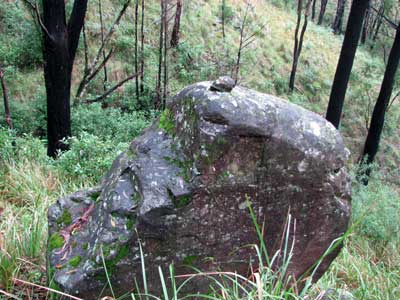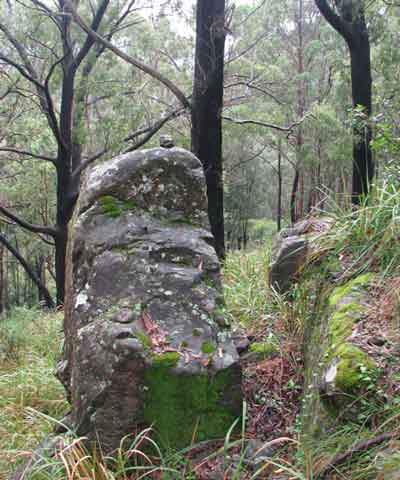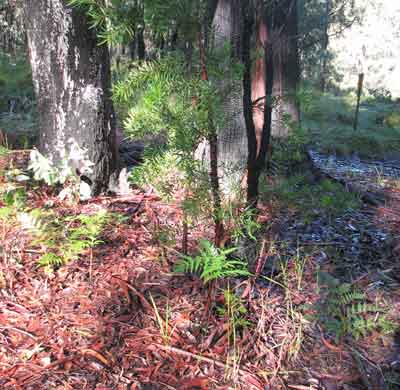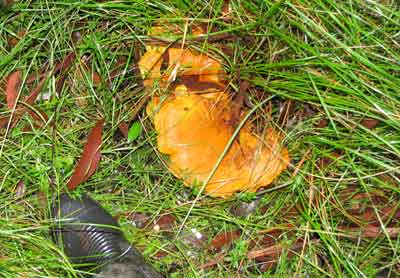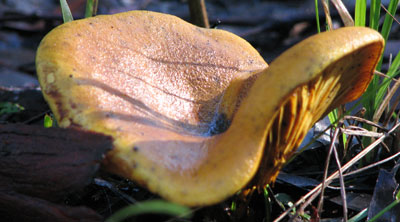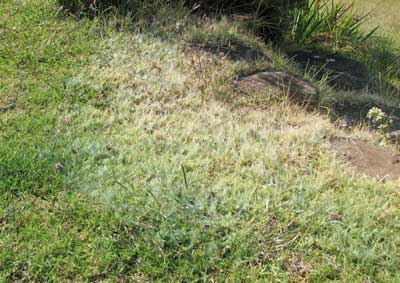
Just before the heatwave ended, I noticed a patch of the dreaded kikuyu grass seemed to be dying off, becoming pale and yellowish and oddly ‘misted’.
The native grass parts of the ‘lawn’ were browning off but usually the kikuyu is the last to go brown in hot and dry times. Its runners extend so far underground and it is such a determined survivor that it is a supremely equipped invader.
Originally from east Africa, it is a particular scourge on the coast where good rainfall allows it to mount fences and swamp sheds under a bright green tide if left ungrazed.
I curse the day I bought it here, on the advice of the then Soil Conservation Department, to hold the soil on freshly made banks and dam walls. Fortunately it does not do very well here where it can be grazed by the native animals, so it’s mostly only inside my house yard.
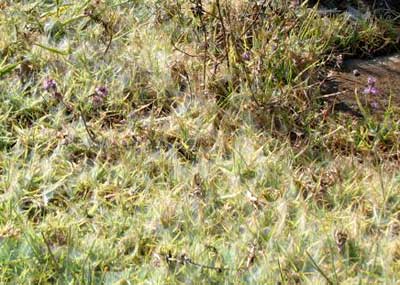
There are no horses here now to be let in to eat my grass, and I haven’t got around to mowing yet. When I took a closer look at the odd patch of kikuyu it seemed to have very fine spiderwebs over the whole widening arc. But they were nowhere else.
Having never seen this before, I wondered why it should be connected to the lack of grazing or mowing. I began to wonder if this wasn’t some sort of slime mould, as they can take the most extraordinary forms.
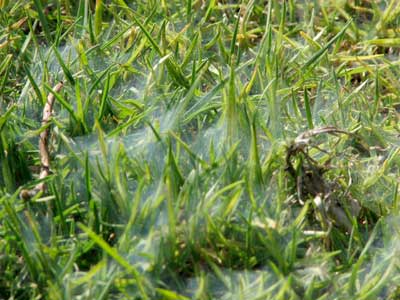
But when I searched the net I discovered that it is a rare event: the flowering of the kikuyu.
Why it should be happening in only a small patch, I don’t know, but apparently ‘the pollen sacs, or anthers, extend above the grass on slender white filaments and give the area a whitish cast’.
Another site said that it flowers infrequently and that when it does, the area may seem ‘covered in spidery threads of white filaments’.
Without a doubt this is what I was seeing.
Pennisetum clandestinum is the botanical name for kikuyu … and ‘clandestine’ is most appropriate for its strange and secret flowering. Yet another example of the amazing ways of nature!
